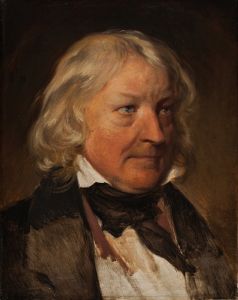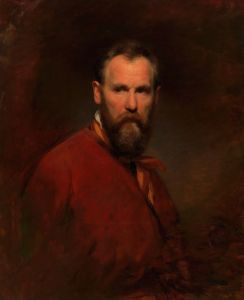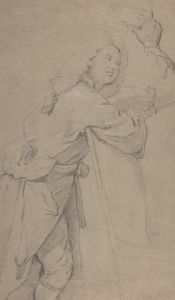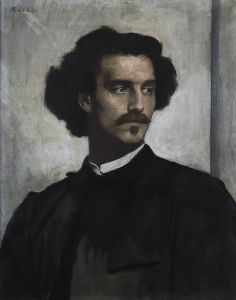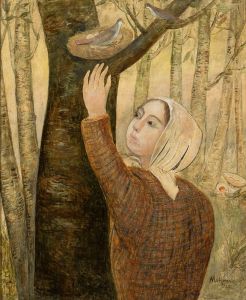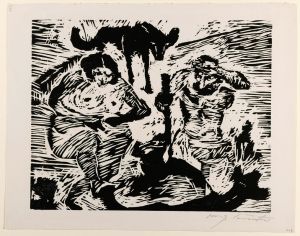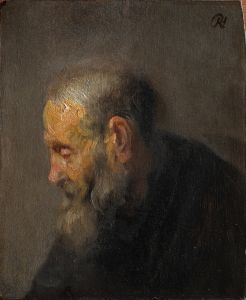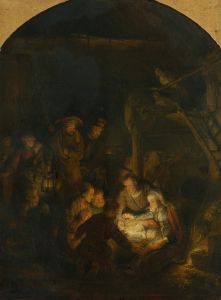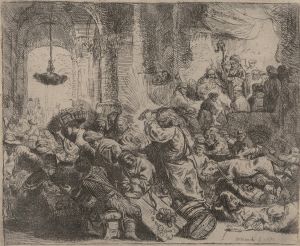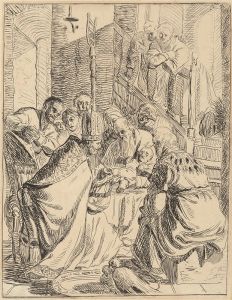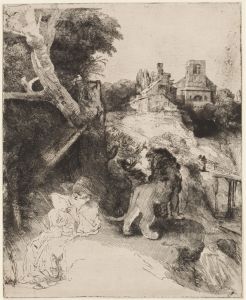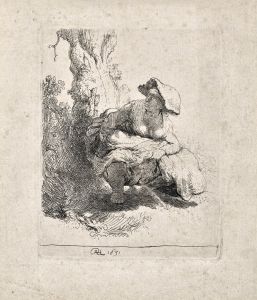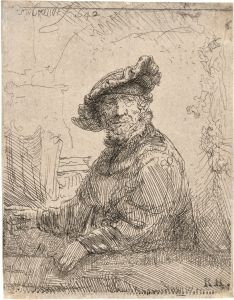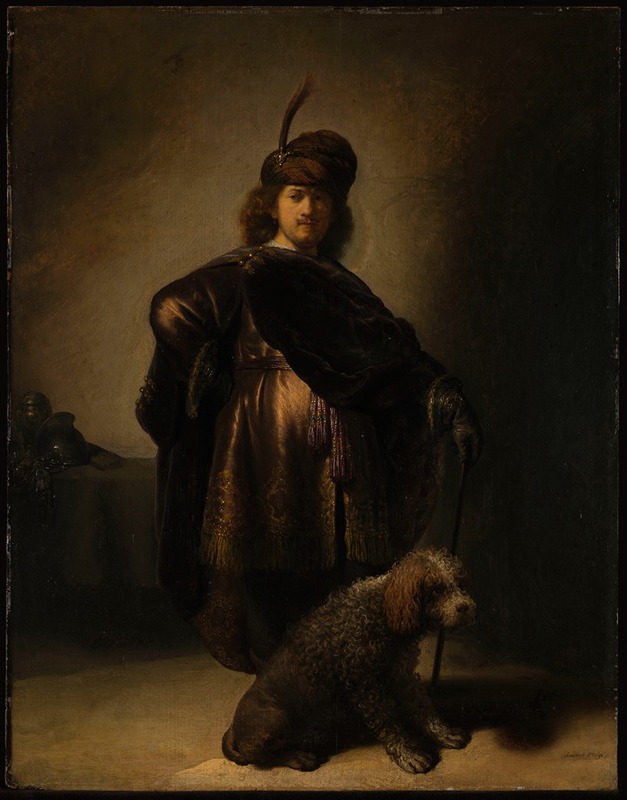
Portrait of the artist in oriental costume
A hand-painted replica of Rembrandt van Rijn’s masterpiece Portrait of the artist in oriental costume, meticulously crafted by professional artists to capture the true essence of the original. Each piece is created with museum-quality canvas and rare mineral pigments, carefully painted by experienced artists with delicate brushstrokes and rich, layered colors to perfectly recreate the texture of the original artwork. Unlike machine-printed reproductions, this hand-painted version brings the painting to life, infused with the artist’s emotions and skill in every stroke. Whether for personal collection or home decoration, it instantly elevates the artistic atmosphere of any space.
"Portrait of the Artist in Oriental Costume" is a painting by the renowned Dutch artist Rembrandt van Rijn. Created around 1631, this work is a striking example of Rembrandt's early mastery in portraiture and his fascination with exotic attire, which was a common theme in his work during this period.
The painting depicts Rembrandt himself dressed in what was perceived at the time as "oriental" clothing. This includes a lavish, richly colored robe and a turban, which were not typical of Dutch fashion but rather inspired by the Middle Eastern and North African attire. This fascination with exotic costumes was part of a broader trend in 17th-century European art, where artists and their patrons were intrigued by the cultures and goods brought back by traders and explorers.
In this self-portrait, Rembrandt's face is illuminated with his characteristic use of chiaroscuro, a technique that employs strong contrasts between light and dark to achieve a sense of volume and three-dimensionality. The light falls dramatically on his face, highlighting his features and the texture of his skin, while the background remains dark and undefined, drawing the viewer's attention directly to the subject.
Rembrandt's choice to portray himself in such attire may reflect his interest in the exotic and the theatrical, as well as his desire to experiment with different personas and identities. This self-portrait is not just a straightforward depiction of the artist but also a demonstration of his skill in rendering different textures and materials, from the softness of the fabric to the intricate details of the turban.
The painting is also notable for its psychological depth. Rembrandt's gaze is direct and penetrating, inviting viewers to engage with the artist on a personal level. This introspective quality is a hallmark of Rembrandt's portraits, which often convey a deep sense of the sitter's inner life.
"Portrait of the Artist in Oriental Costume" is housed in the Petit Palais, Musée des Beaux-Arts de la Ville de Paris. It remains an important work within Rembrandt's oeuvre, illustrating his early style and his ability to combine realism with a sense of drama and exoticism. This painting, like many of Rembrandt's works, continues to be studied and admired for its technical brilliance and its insight into the artist's self-perception and creative imagination.





